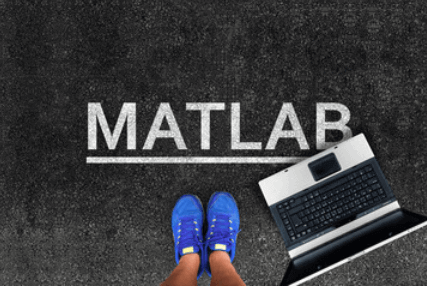Question
a.
Receiver is to be synchronized for byte reception
b.
Receiver recovers lost ‘0’ and ‘1’s from these padded bits
c.
Padded bits are useful in parity computation
d.
None of these
Posted under GATE cse question paper Networking
Engage with the Community - Add Your Comment
Confused About the Answer? Ask for Details Here.
Know the Explanation? Add it Here.
Q. In serial data transmission, every byte of data is padded with a ‘0’ in the beginning and one or two ‘I’ s at the end of byte because
Similar Questions
Discover Related MCQs
Q. Consider a LAN with four nodes S1, S2, S3 and S4. Time is divided into fixed-size slots, and a node can begin its transmission only at the beginning of a slot. A collision is said to have occurred if more than one node transmit in the same slot. The probabilities of generation of a frame in a time slot by S1, S2, S3 and S4 are 0.1, 0.2, 0.3 and 0.4, respectively. The probability of sending a frame in the first slot without any collision by any of these four stations is _________.
View solution
Q. Suppose that the stop-and-wait protocol is used on a link with a bit rate of 64 kilobits per second and 20 milliseconds propagation delay. Assume that the transmission time for the acknowledgment and the processing time at nodes are negligible. Then the minimum frame size in bytes to achieve a link utilization of at least 50% is _________.
View solution
Q. Consider a CSMA/CD network that transmits data at a rate of 100 Mbps (108 bits per second) over a 1 km (kilometer) cable with no repeaters. If the minimum frame size required for this network is 1250 bytes, what is the signal speed (km/sec) in the cable?
View solution
Q. Which one of the following statements is FALSE ?
View solution
Q. Which of the following statements is TRUE about CSMA/CD ?
View solution
Q. Which of the following statements is FALSE regarding a bridge?
View solution
Q. A network with CSMA/CD protocol in the MAC layer is running at 1 Gbps over a 1 km cable with no repeaters. The signal speed in the cable is 2 x 108 m/sec. The minimum frame size for this network should be
View solution
Q. A channel has a bit rate of 4 kbps and one-way propagation delay of 20 ms. The channel uses stop and wait protocol. The transmission time of the acknowledgement frame is negligible. To get a channel efficiency of at least 50%, the minimum frame size should be
View solution
Q. In a TDM medium access control bus LAN, each station is assigned one time slot per cycle for transmission. Assume that the length of each time slot is the time to transmit 100 bits plus the end-to-end propagation delay. Assume a propagation speed of 2 x 10^8 m/sec. The length of the LAN is 1 km with a bandwidth of 10 Mbps. The maximum number of stations that can be allowed in the LAN so that the throughput of each station can be 2/3 Mbps is
View solution
Q. Consider the following message M = 1010001101. The cyclic redundancy check (CRC) for this message using the divisor polynomial x^5 + x^4 + x^2 + 1 is :
View solution
Q. A sender uses the Stop-and-Wait ARQ protocol for reliable transmission of frames. Frames are of size 1000 bytes and the transmission rate at the sender is 80 Kbps (1Kbps = 1000 bits/second). Size of an acknowledgement is 100 bytes and the transmission rate at the receiver is 8 Kbps. The one-way propagation delay is 100 milliseconds. Assuming no frame is lost, the sender throughput is __________ bytes/second.
View solution
Q. In an Ethernet local area network, which one of the following statements is TRUE ?
View solution
Q. A network has a data transmission bandwidth of 20 × 10 6 bits per second. It uses CSMA/CD in the MAC layer. The maximum signal propagation time from one node to another node is 40 microseconds. The minimum size of a frame in the network is _________ bytes.
View solution
Q. Consider a 128×10 3 bits/second satellite communication link with one way propagation delay of 150 milliseconds. Selective retransmission (repeat) protocol is used on this link to send data with a frame size of 1 kilobyte. Neglect the transmission time of acknowledgement. The minimum number of bits required for the sequence number field to achieve 100% utilization is ___________
View solution
Q. How many bytes of data can be sent in 15 seconds over a serial link with baud rate of 9600 in asynchronous mode with odd parity and two stop bits in the frame?
View solution
Q. A 1Mbps satellite link connects two ground stations. The altitude of the satellite is 36,504 km and speed of the signal is 3 × 10^8 m/s. What should be the packet size for a channel utilization of 25% for a satellite link using go-back-127 sliding window protocol? Assume that the acknowledgment packets are negligible in size and that there are no errors during communication.
View solution
Q. The minimum frame size required for a CSMA/CD based computer network running at 1 Gbps on a 200m cable with a link speed of 2 × 10^8m/s is
View solution
Q. In an IPv4 datagram, the M bit is 0, the value of HLEN is 10, the value of total length is 400 and the fragment offset value is 300. The position of the datagram, the sequence numbers of the first and the last bytes of the payload, respectively are
View solution
Q. Consider a source computer(S) transmitting a file of size 106 bits to a destination computer(D)over a network of two routers (R1 and R2) and three links(L1, L2, and L3). L1connects S to R1; L2 connects R1 to R2; and L3 connects R2 to D.Let each link be of length 100 km. Assume signals travel over each link at a speed of 108 meters per second.Assume that the link bandwidth on each link is 1Mbps. Let the file be broken down into 1000 packets each of size 1000 bits. Find the total sum of transmission and propagation delays in transmitting the file from S to D?
View solution
Q. One of the header fields in an IP datagram is the Time to Live(TTL)field.Which of the following statements best explains the need for this field?
View solution
Suggested Topics
Are you eager to expand your knowledge beyond Networking? We've curated a selection of related categories that you might find intriguing.
Click on the categories below to discover a wealth of MCQs and enrich your understanding of Computer Science. Happy exploring!








